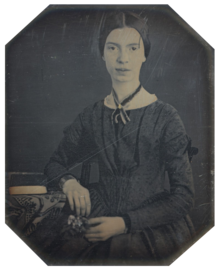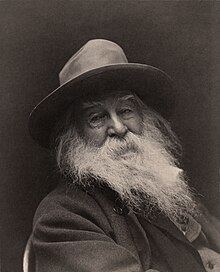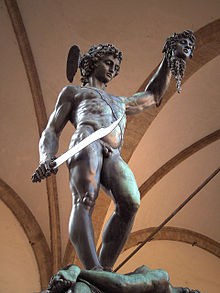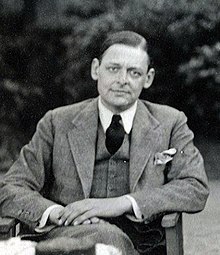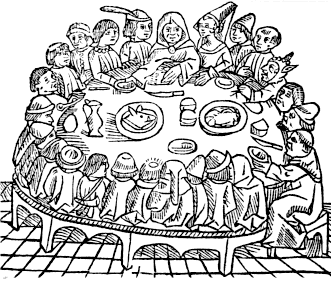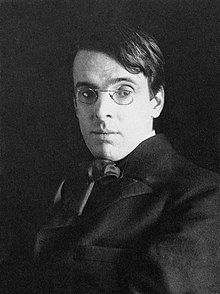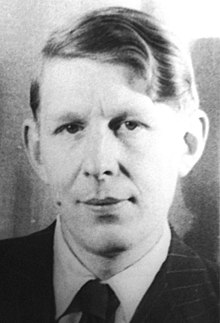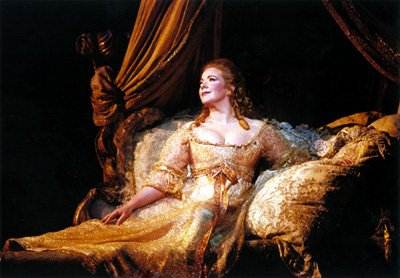1.Matthew Arnold (24 December 1822 – 15 April 1888) was an English poet and cultural critic who worked as an inspector of schools. He was the son of Thomas Arnold, the famed headmaster of Rugby School, and brother to both Tom Arnold, literary professor, and William Delafield Arnold, novelist and colonial administrator. Matthew Arnold has been characterised as a sage writer, a type of writer who chastises and instructs the reader on contemporary social issues.
His 1867 poem, "Dover Beach," depicted a nightmarish world from which the old religious verities have receded. It is sometimes held up as an early, if not the first, example of the modern sensibility. In a famous preface to a selection of the poems of William Wordsworth, Arnold identified, a little ironically, as a "Wordsworthian." The influence of Wordsworth, both in ideas and in diction, is unmistakable in Arnold's best poetry. Arnold's poem, "Dover Beach" was included in Ray Bradbury's novel, Fahrenheit 451, and is also featured prominently in the novel Saturday by Ian McEwan. It has also been quoted or alluded to in a variety of other contexts .
Some consider Arnold to be the bridge between Romanticism and Modernism. His use of symbolic landscapes was typical of the Romantic era, while his sceptical and pessimistic perspective was typical of the Modern era. The rationalistic tendency of certain of his writings gave offence to many readers, and the sufficiency of his equipment in scholarship for dealing with some of the subjects which he handled was called in question, but he undoubtedly exercised a stimulating influence on his time. His writings are characterised by the finest culture, high purpose, sincerity, and a style of great distinction, and much of his poetry has an exquisite and subtle beauty, though here also it has been doubted whether high culture and wide knowledge of poetry did not sometimes take the place of true poetic fire. Henry James wrote that Matthew Arnold's poetry will appeal to those who "like their pleasures rare" and who like to hear the poet "taking breath."
"Dover Beach"
http://www.thefullwiki.org/Dover_Beach
 2.Andrew Marvell ( 31 March 1621 – 16 August 1678) was an English metaphysical poet, satirist and politician who sat in the House of Commons at various times between 1659 and 1678. During the Commonwealth period he was a colleague and friend of John Milton. His poems range from the love-song "To His Coy Mistress", to evocations of an aristocratic country house and garden in "Upon Appleton House" and "The Garden", the political address "An Horatian Ode upon Cromwell's Return from Ireland", and the later personal and political satires "Flecknoe" and "The Character of Holland".
2.Andrew Marvell ( 31 March 1621 – 16 August 1678) was an English metaphysical poet, satirist and politician who sat in the House of Commons at various times between 1659 and 1678. During the Commonwealth period he was a colleague and friend of John Milton. His poems range from the love-song "To His Coy Mistress", to evocations of an aristocratic country house and garden in "Upon Appleton House" and "The Garden", the political address "An Horatian Ode upon Cromwell's Return from Ireland", and the later personal and political satires "Flecknoe" and "The Character of Holland".T. S. Eliot wrote of Marvell's style that 'It is more than a technical accomplishment, or the vocabulary and syntax of an epoch; it is, what we have designated tentatively as wit, a tough reasonableness beneath the slight lyric grace'. He also identified Marvell and the metaphysical school with the 'dissociation of sensibility' that occurred in 17th-century English literature; Eliot described this trend as 'something which... happened to the mind of England... it is the difference between the intellectual poet and the reflective poet'.Poets increasingly developed a self-conscious relationship to tradition, which took the form of a new emphasis on craftsmanship of expression and an idiosyncratic freedom in allusions to Classical and Biblical sources.
Marvell's most celebrated lyric, "To His Coy Mistress", combines an old poetic conceit (the persuasion of the speaker's lover by means of a carpe diem philosophy) with Marvell's typically vibrant imagery and easy command of rhyming couplets. Other works incorporate topical satire and religious themes.
"To His Coy Mistress"
http://www.poetryfoundation.org/poems-and-poets/poems/detail/44688
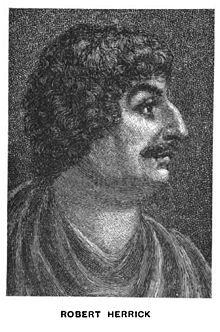 3. Robert Herrick (baptised 24 August 1591 – buried 15 October 1674) was a 17th-century English lyric poet and cleric. He is best known for Hesperides, a book of poems. This includes the carpe diem poem "To the Virgins, to Make Much of Time",
3. Robert Herrick (baptised 24 August 1591 – buried 15 October 1674) was a 17th-century English lyric poet and cleric. He is best known for Hesperides, a book of poems. This includes the carpe diem poem "To the Virgins, to Make Much of Time", The over-riding message of Herrick’s work is that life is short, the world is beautiful, love is splendid, and we must use the short time we have to make the most of it. This message can be seen clearly in "To the Virgins, to make much of Time"
He dealt with English country life and its seasons, village customs, complimentary poems to various ladies and his friends, themes taken from classical writings and a solid bedrock of Christian faith, not intellectualized but underpinning the rest.
It has been said of Herrick's style 'his directness of speech with clear and simple presentation of thought, a fine artist working with conscious knowledge of his art, of an England of his youth in which he lives and moves and loves, clearly assigns him to the first place as a lyrical poet in the strict and pure sense of the phrase'.
"To the Virgins, to Make Much of Time"
https://en.wikipedia.org/wiki/To_the_Virgins,_to_Make_Much_of_Time
4.Carpe diem is a Latin aphorism, usually translated "seize the day", taken from book 1 of the Roman poet Horace's work Odes (23 BC).In Horace, the phrase is part of the longer "carpe diem, quam minimum credula postero", which can be translated as "Seize the day, put very little trust in tomorrow (the future)". The ode says that the future is unforeseen and that one should not leave to chance future happenings, but rather one should do all one can today to make one's future better. This phrase is usually understood against Horace's Epicurean background. The meaning of "carpe diem" as used by Horace is not to ignore the future, but rather not to trust that everything is going to fall into place for you and taking action for the future today.
 5.Quintus Horatius Flaccus (December 8, 65 BC – November 27, 8 BC), known in the English-speaking world as Horace was the leading Roman lyric poet during the time of Augustus . The rhetorician Quintillian regarded his Odes as just about the only Latin lyrics worth reading: "He can be lofty sometimes, yet he is also full of charm and grace, versatile in his figures, and felicitously daring in his choice of words."
5.Quintus Horatius Flaccus (December 8, 65 BC – November 27, 8 BC), known in the English-speaking world as Horace was the leading Roman lyric poet during the time of Augustus . The rhetorician Quintillian regarded his Odes as just about the only Latin lyrics worth reading: "He can be lofty sometimes, yet he is also full of charm and grace, versatile in his figures, and felicitously daring in his choice of words."Horace also crafted elegant hexameter verses (Sermones and Epistles) and caustic iambic poetry (Epodes). The hexameters are amusing yet serious works, friendly in tone, leading the ancient satirist Persius to comment: "as his friend laughs, Horace slyly puts his finger on his every fault; once let in, he plays about the heartstrings".
His career coincided with Rome's momentous change from Republic to Empire. An officer in the republican army defeated at the Battle of Philippi in 42 BC, he was befriended by Octavian's right-hand man in civil affairs, Maecenas, and became a spokesman for the new regime. For some commentators, his association with the regime was a delicate balance in which he maintained a strong measure of independence (he was "a master of the graceful sidestep") but for others he was, in John Dryden's phrase, "a well-mannered court slave".
6.The Odes are a collection in four books of Latin lyric poems by Horace. The Horatian ode format and style has been emulated since by other poets. Books 1 to 3 were published in 23 BC. According to the journal Quadrant, they were "unparalleled by any collection of lyric poetry produced before or after in Latin literature". A fourth book, consisting of 15 poems, was published in 13 BC.
The Odes were developed as a conscious imitation of the short lyric poetry of Greek originals - Pindar, Sappho and Alcaeus are some of Horace's models. His genius lay in applying these older forms to the social life of Rome in the age of Augustus. The Odes cover a range of subjects - Love, Friendship, Wine, Religion, Morality, Patriotism; poems of eulogy addressed to Augustus and his relations; and verses written on a miscellany of subjects and incidents, including the uncertainty of life, the cultivation of tranquility and contentment, and the observance of moderation or the "golden mean."
The Odes have been considered traditionally by English-speaking scholars as purely literary works. Recent evidence by a Horatian scholar suggests they may have been intended as performance art, a Latin re-interpretation of Greek lyric song.The Roman writer Petronius, writing less than a century after Horace's death, remarked on the curiosa felicitas (studied spontaneity) of the Odes (Satyricon 118). The English poet Alfred Lord Tennyson declared that the Odes provided "jewels five-words long, that on the stretched forefinger of all Time / Sparkle for ever" .The collected odes were first published in three books in 23 BC.
The painting
Gather Ye Rosebuds While Ye May

John William Waterhouse (April 6, 1849 – February 10, 1917) was an English painter known for working in the Pre-Raphaelite style. He worked several decades after the breakup of the Pre-Raphaelite Brotherhood, which had seen its heyday in the mid-nineteenth century, leading to his sobriquet "the modern Pre-Raphaelite". Borrowing stylistic influences not only from the earlier Pre-Raphaelites but also from his contemporaries, the Impressionists, his artworks were known for their depictions of women from both ancient Greek mythology and Arthurian legend.
Born in Italy to English parents who were both painters, he later moved to London, where he enrolled in the Royal Academy of Art. He soon began exhibiting at their annual summer exhibitions, focusing on the creation of large canvas works depicting scenes from the daily life and mythology of ancient Greece. Later on in his career he came to embrace the Pre-Raphaelite style of painting despite the fact that it had gone out of fashion in the British art scene several decades before.





